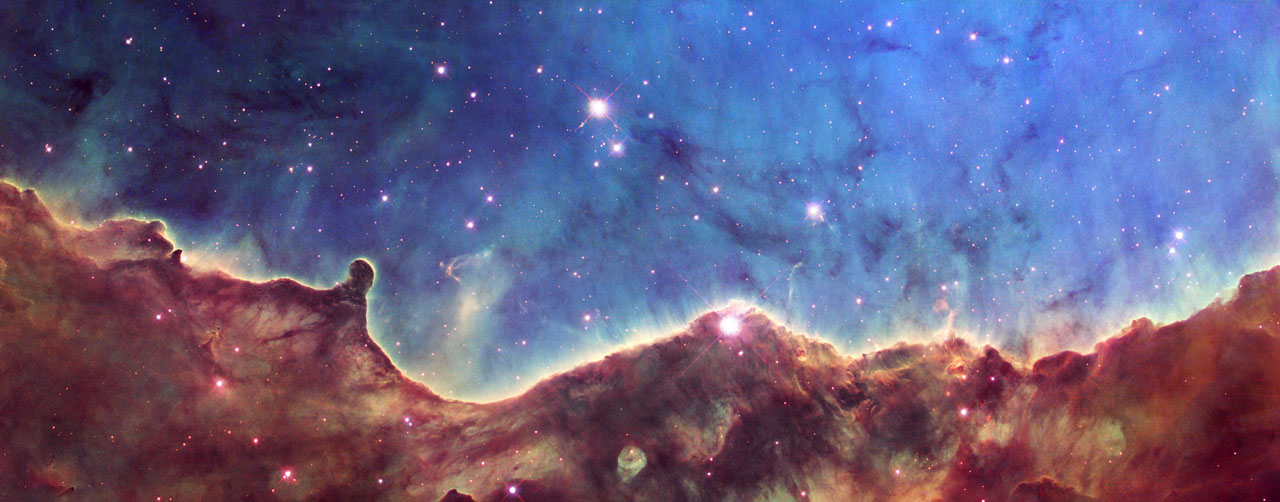About 7,500 light-years from Earth, there’s a giant interstellar pocket that has produced a host of bright young stars. Thanks to massive deposits of gas and dust — the key star-making ingredients — the phenomenon known as NGC 3324 was a hotbed for starbirth several million years ago that produced several very hot-and-heavy stars that clearly stick out in the new image above (click for a larger version).The photo was captured by the European Southern Observatory’s Wide Field Imager at the organization’s La Silla Observatory in Chile. For those of you viewing at home, NGC 3324 is located in the southern constellation of Carina, on the northern edge of the Carina Nebula, host to a number of starbirth sites like this one.The mass of whitish material to the center right of the image was created by blasts of stellar winds and intense radiation from young stars. According to the ESO, the red glow is caused by the recapture of electrons by hydrogen atoms that were initially knocked out by ultraviolet radiation unleashed from the baby stars. The greenish-yellow spots in the center of the image are caused by the ionization of oxygen.It’s not all color, however. The dark, wispy areas of the bright cloud are caused by dust grains that block out glowing gas in the background. It’s a lovely effect, one that’s reduced the ESO press team to writing about how the dust creates “shadowy, filigree features that add another layer of evocative structure to the rich vista.” Flowery language aside, it’s still pretty darn cool. NGC 3324 is a popular location for stargazers, and has also been imaged by the Hubble telescope, a sample of which is shared above. As compared to the ESO’s Wide Field Imager, Hubble is capable of higher resolution images, but over a much narrower area. Combined, the two telescopes offer an excellent glimpse at where stars come from.
NGC 3324 is a popular location for stargazers, and has also been imaged by the Hubble telescope, a sample of which is shared above. As compared to the ESO’s Wide Field Imager, Hubble is capable of higher resolution images, but over a much narrower area. Combined, the two telescopes offer an excellent glimpse at where stars come from.
Advertisement
The Carina Nebula, imaged by the ESO in 2009.
